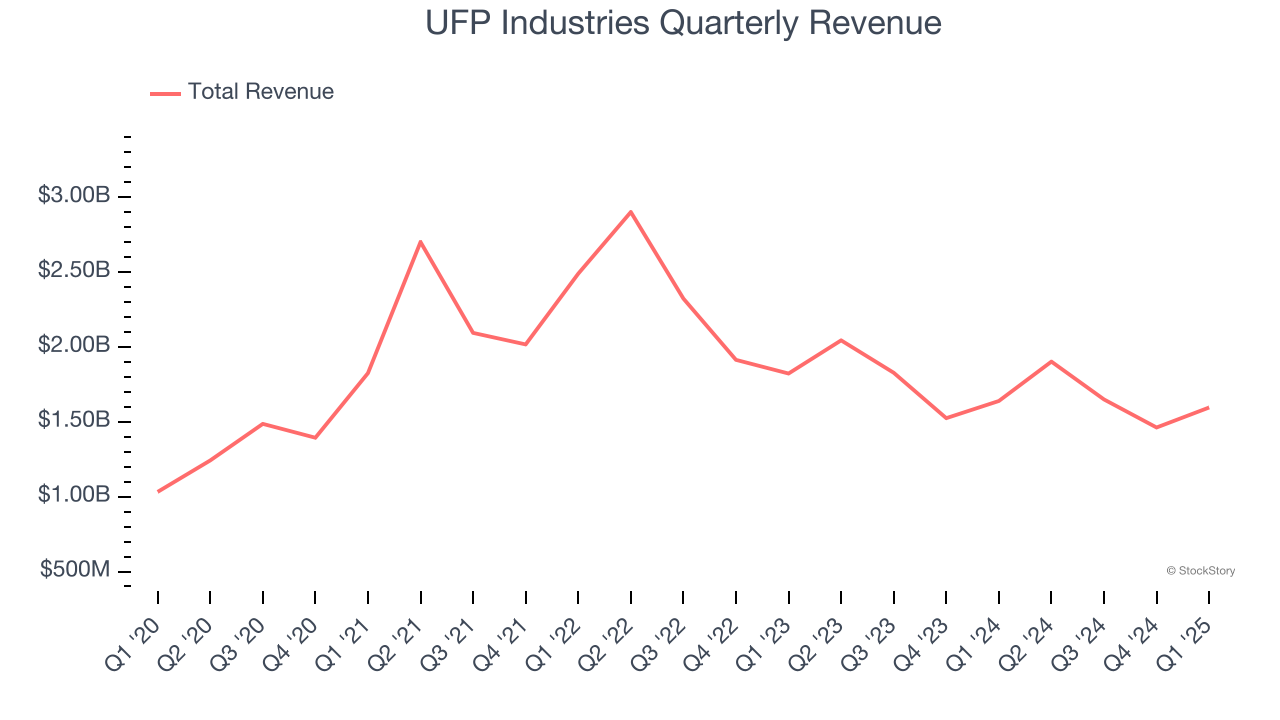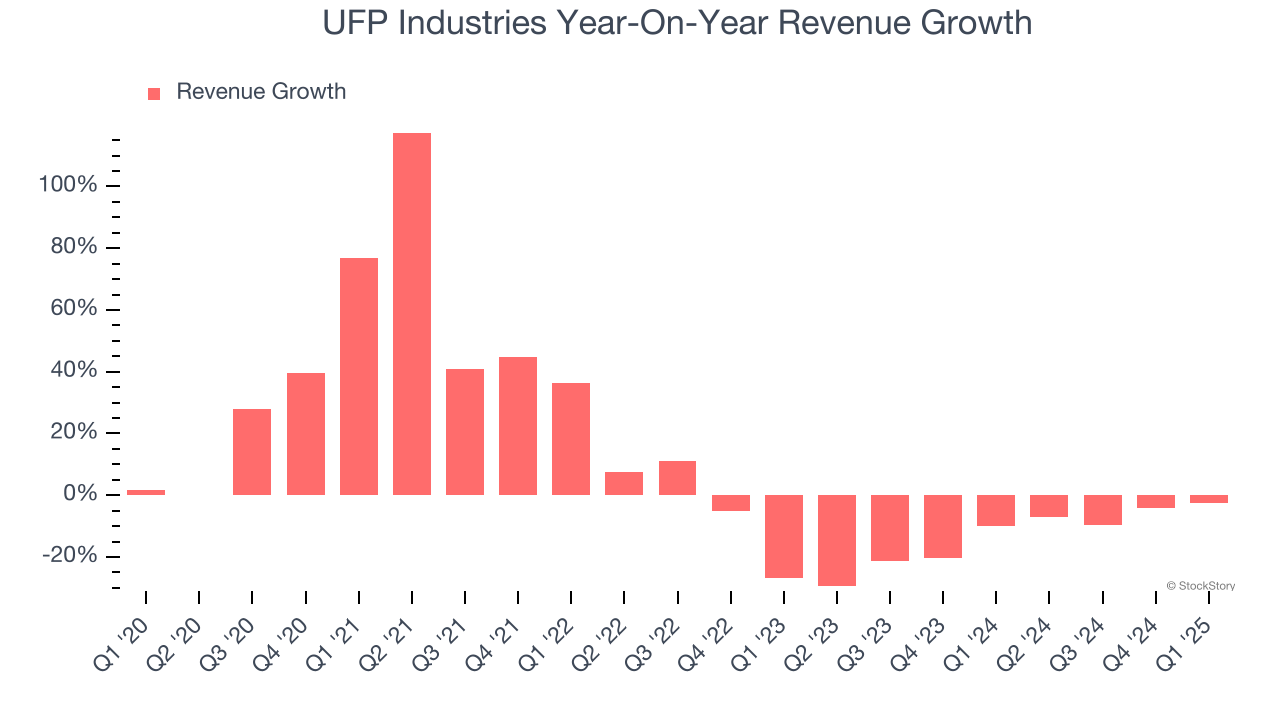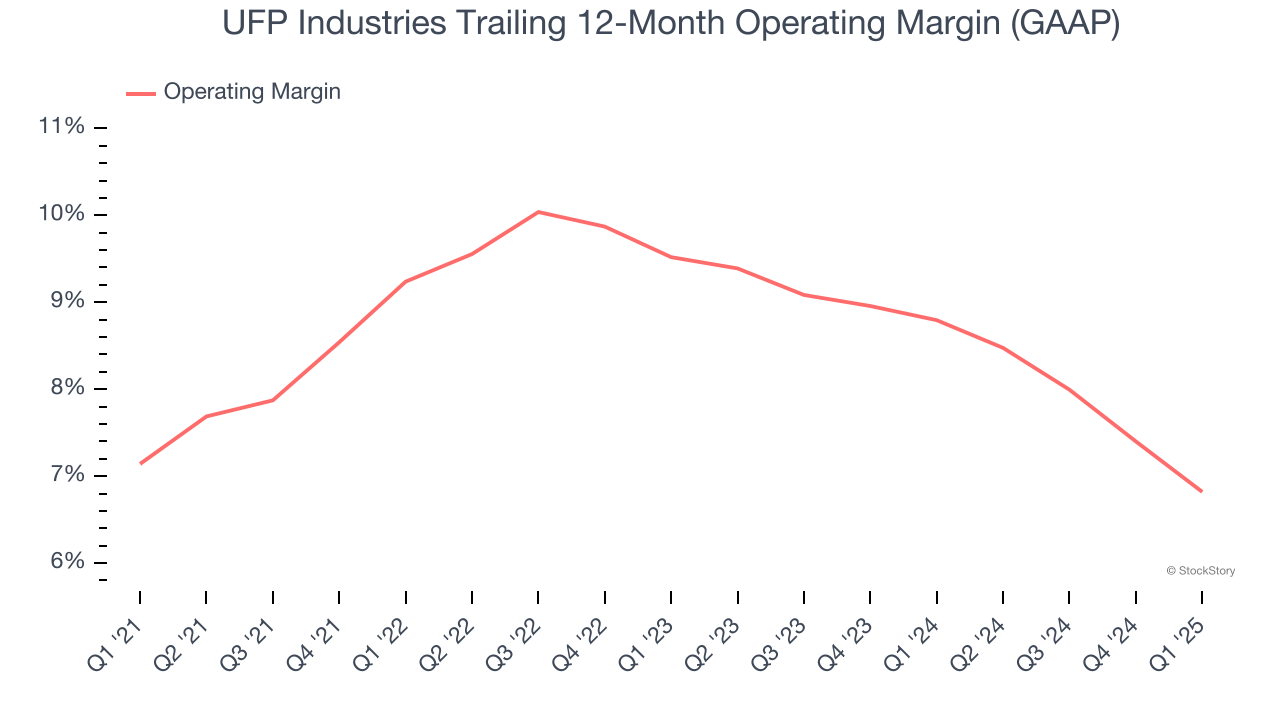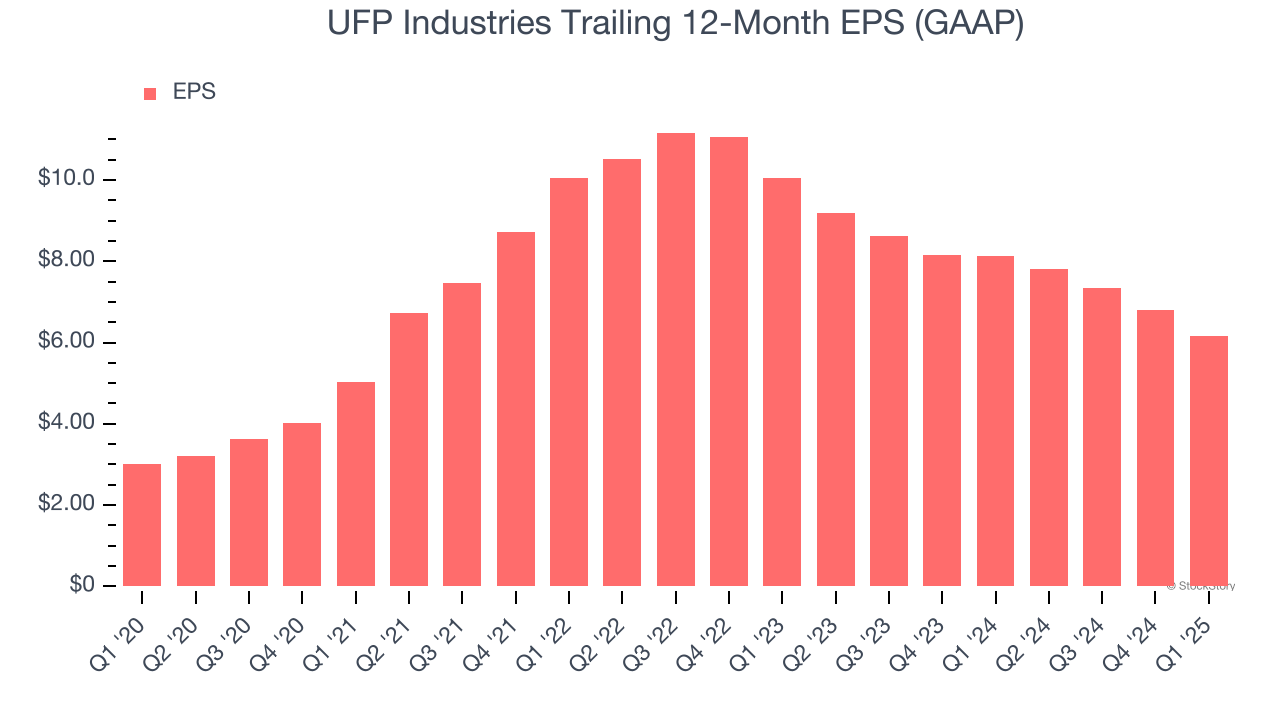|
|
|

|
|||||

|
|

Building materials manufacturer UFP Industries (NASDAQ:UFPI) missed Wall Street’s revenue expectations in Q1 CY2025, with sales falling 2.7% year on year to $1.60 billion. Its GAAP profit of $1.30 per share was 16.9% below analysts’ consensus estimates.
Is now the time to buy UFP Industries? Find out by accessing our full research report, it’s free.
“While our first quarter proved more challenging than anticipated and visibility remains limited, we are more encouraged by recent business trends,” said Will Schwartz, UFP Industries CEO.
Beginning as a lumber supplier in the 1950s, UFP Industries (NASDAQ:UFPI) is a holding company making building materials for the construction, retail, and industrial sectors.
A company’s long-term performance is an indicator of its overall quality. Even a bad business can shine for one or two quarters, but a top-tier one grows for years. Thankfully, UFP Industries’s 8.3% annualized revenue growth over the last five years was decent. Its growth was slightly above the average industrials company and shows its offerings resonate with customers.

Long-term growth is the most important, but within industrials, a half-decade historical view may miss new industry trends or demand cycles. UFP Industries’s recent performance marks a sharp pivot from its five-year trend as its revenue has shown annualized declines of 14.1% over the last two years. UFP Industries isn’t alone in its struggles as the Building Materials industry experienced a cyclical downturn, with many similar businesses observing lower sales at this time.

This quarter, UFP Industries missed Wall Street’s estimates and reported a rather uninspiring 2.7% year-on-year revenue decline, generating $1.60 billion of revenue.
Looking ahead, sell-side analysts expect revenue to grow 5.1% over the next 12 months. While this projection implies its newer products and services will catalyze better top-line performance, it is still below average for the sector.
Here at StockStory, we certainly understand the potential of thematic investing. Diverse winners from Microsoft (MSFT) to Alphabet (GOOG), Coca-Cola (KO) to Monster Beverage (MNST) could all have been identified as promising growth stories with a megatrend driving the growth. So, in that spirit, we’ve identified a relatively under-the-radar profitable growth stock benefiting from the rise of AI, available to you FREE via this link.
UFP Industries has done a decent job managing its cost base over the last five years. The company has produced an average operating margin of 8.5%, higher than the broader industrials sector.
Analyzing the trend in its profitability, UFP Industries’s operating margin might fluctuated slightly but has generally stayed the same over the last five years. This raises questions about the company’s expense base because its revenue growth should have given it leverage on its fixed costs, resulting in better economies of scale and profitability.

This quarter, UFP Industries generated an operating profit margin of 5.8%, down 2.4 percentage points year on year. Since UFP Industries’s gross margin decreased more than its operating margin, we can assume its recent inefficiencies were driven more by weaker leverage on its cost of sales rather than increased marketing, R&D, and administrative overhead expenses.
We track the long-term change in earnings per share (EPS) for the same reason as long-term revenue growth. Compared to revenue, however, EPS highlights whether a company’s growth is profitable.
UFP Industries’s EPS grew at a spectacular 15.3% compounded annual growth rate over the last five years, higher than its 8.3% annualized revenue growth. However, we take this with a grain of salt because its operating margin didn’t expand and it didn’t repurchase its shares, meaning the delta came from reduced interest expenses or taxes.

Like with revenue, we analyze EPS over a more recent period because it can provide insight into an emerging theme or development for the business.
UFP Industries’s two-year annual EPS declines of 21.8% were bad and lower than its two-year revenue performance.
In Q1, UFP Industries reported EPS at $1.30, down from $1.96 in the same quarter last year. This print missed analysts’ estimates, but we care more about long-term EPS growth than short-term movements. Over the next 12 months, Wall Street expects UFP Industries’s full-year EPS of $6.15 to grow 16.7%.
We struggled to find many positives in these results as its revenue, EPS, and EBITDA fell short of Wall Street’s estimates. Overall, this was a weaker quarter. The stock traded down 2.3% to $104 immediately after reporting.
UFP Industries underperformed this quarter, but does that create an opportunity to invest right now? When making that decision, it’s important to consider its valuation, business qualities, as well as what has happened in the latest quarter. We cover that in our actionable full research report which you can read here, it’s free.
| Dec-05 | |
| Dec-05 | |
| Dec-03 | |
| Dec-02 | |
| Nov-28 | |
| Nov-25 | |
| Nov-24 | |
| Nov-17 | |
| Nov-12 | |
| Nov-06 | |
| Nov-05 | |
| Oct-30 | |
| Oct-29 | |
| Oct-29 | |
| Oct-29 |
Join thousands of traders who make more informed decisions with our premium features. Real-time quotes, advanced visualizations, backtesting, and much more.
Learn more about FINVIZ*Elite